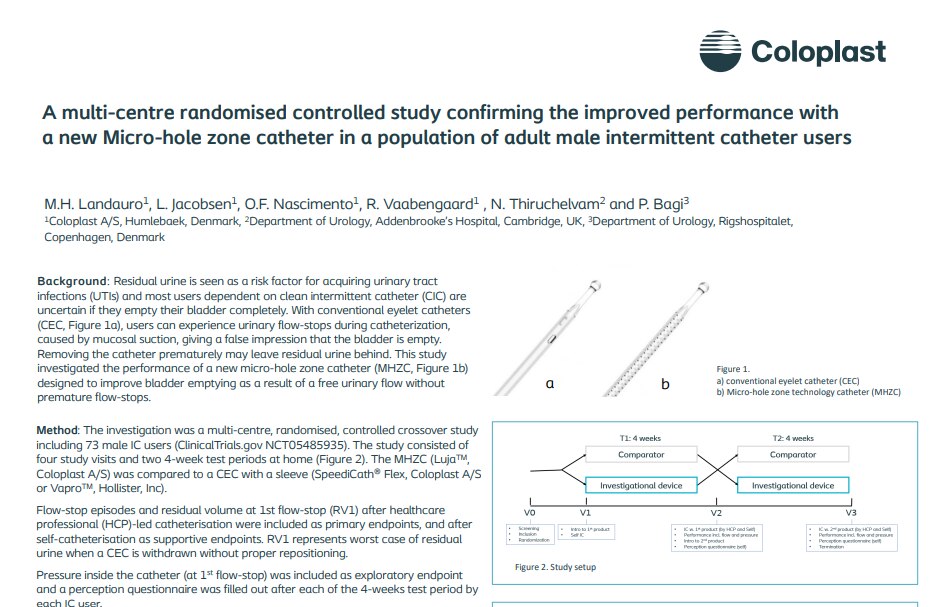
Get full access with a free account
Benefits of the Coloplast® Professional Educational platform
- Full access to educational content, events and resources
- Track your progress
- Share content with your colleagues
- Share supporting material with your patient
Confirmatory Mode of Action in Male IC users1
Objectives: To demonstrate superiority of Luja over 2-eyelet catheters in terms of number of flow-stop episodes, residual volume and frequency of positive haematuria.
Population: 72 Male IC users (Vapro/SC Flex users)
Key eligibility criteria for recruitment to trial 1
- SC as only bladder emptying method applied
- Neurogenic and non-neurogenic bladder dysfunction
- No UTI symptoms at inclusion
- Currently using a sleeved ISC catheter

Endpoints1
Primary endpoints: Flow-stop episodes and residual volume at 1st flow-stop in ISC by HCP
Secondary endpoints: Flow-stop episodes, residual volume at 1st flow-stop, and haematuria (yes/no) in self ISC
Exploratory endpoints: Intra-catheter pressure, Residual volume w. Bladder Scanner, Discomfort, QoL, Perception, Haematuria grading
Assessments: ISC position, Urine volumes (at all flow-stops), dipstick haematuria/leukocyturia,
The Micro-hole Zone Technology catheter is superior to comparator§ in terms of1
Additionally the following perceptions were obtained by users:1
- Less blocking sensation: Significantly less blocking sensation compared with a conventional eyelet catheter (p<0.001).
- More confidence at first flow-stop: Significantly more confident that their bladder is completely empty when the urine flow stops compared to a conventional eyelet catheter (p=0.003).
- Easier emptying: Significantly easier to completely empty the bladder compared with a conventional eyelet catheter (p=0.004).
*Statistically confirmed at p < 0.001
§ SpeediCath Flex was the comparator product in 98% of the catheterizations by HCPs and in all self-catheterizations.
†The last flow-stop is considered equal to end of catheterisation and therefore discounted from the total number of flow-stops. Hence, catheterisations with a single flow-stop are reported as having no flow-stops.

